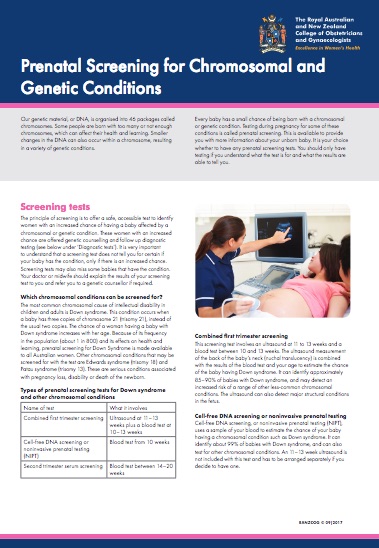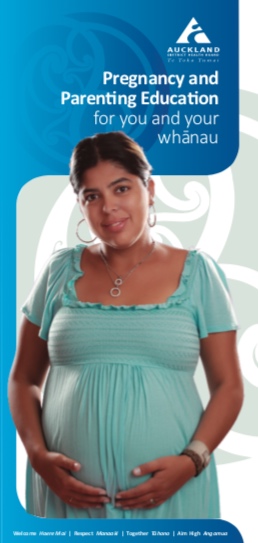Wishing everyone happy holidays and a joyful New Year from the Healthify team. Don't forget to Slip, Slop, Slap and Wrap!
Pregnancy stages
Hapūtanga stages, known as the first, second and third trimester
Key points about pregnancy stages
- The average length of pregnancy is 40 weeks, and most babies are born somewhere between 38 to 42 weeks.
- Pregnancy (hapūtanga) is divided into 3 stages of 3 months each, known as a trimester.
- The first trimester takes you to 12 to 14 weeks gestation; the second trimester is up to 28 weeks gestation and the third trimester finishes with the birth of your baby.
- It's helpful to be aware of how your growing pēpi is affecting your body in each trimester.

The first 3-month period begins before you're even hapū (pregnant). It starts with your last menstrual period and includes conception, which on average happens 14 days later. For the first 8 weeks, your baby is known as an embryo, after which it is known as a foetus.
During the first trimester, your baby changes from a single fertilised cell into an embryo that implants itself in your uterine wall. Over the next few weeks, the embryo will grow rapidly and the heart and nervous system begin to form and limb buds appear.
By the end of this trimester, your baby is moving freely (although you cannot feel this yet), the circulation and the kidneys are working and the baby is sucking and swallowing. A placenta has developed which ensures the baby receives oxygen, blood supply and nutrients to grow and survive. The baby is attached to the placenta by the umbilical cord.
What's happening to your body?
You may not look pregnant yet – but chances are you're feeling it. In the first few weeks following conception, your hormone levels change significantly as your uterus begins to support the growth of the placenta and the foetus. You may start to experience pregnancy symptoms, eg, overwhelming tiredness, morning sickness, breast tenderness, a metallic taste and frequent urination.
As well as coping with the physical changes, the first trimester is a time to come to terms with the reality of being pregnant and to start to prepare mentally for the changes it will bring.
Choose your lead maternity carer (LMC)
As soon as your pregnancy is confirmed you need to choose a lead maternity carer or LMC. It's good to get onto this early. Your LMC is responsible for your care throughout your pregnancy, during labour and birth and for the first 4 to 6 weeks of parenthood.
An LMC is generally a self-employed midwife, a hospital employed midwife or a private obstetrician (a doctor who specialises in pregnancy and childbirth). A few family doctors (GPs) may also offer maternity care.
Maternity care is free for most people in Aotearoa New Zealand, however there is generally a cost for a private obstetrician or a family doctor. Find out more about who is eligible for free or subsidised maternity care(external link).
You can also visit the Find Your Midwife website(external link) which lists contact details for qualified midwives who are members of the NZ College of Midwives. There's a form to contact them directly through the website. If you can't find a midwife you can search Healthpoint(external link), just type in your address to search for a midwife in your region.
Health tests and screening
When you first see your midwife, family doctor or specialist doctor during pregnancy, you'll be offered some blood tests. These are free and are used to check:
- your blood group and rhesus factor
- if there are any antibodies that may be harmful to your baby
- your haemoglobin (the amount of iron in your blood)
- if you're immune to rubella
- if you're a hepatitis B carrier
- if you have syphilis
- if you have HIV
- if you have diabetes or are at risk of developing diabetes.
Read more about antenatal blood tests.
An optional test is antenatal screening for Down syndrome and other conditions, known as MSS1 or MSS2. This screening includes a free blood test and a scan that you may have to pay for. There's also another paid option known as the NIPT or non-invasive prenatal testing which screens for Down syndrome, Edwards syndrome and Patau syndrome.
If you're over 25 years of age and have never had a cervical screening test, it's important to get this done. You can now choose to do your own vaginal swab in private at your healthcare provider's clinic.
For many pregnant people a dating scan isn't necessary to work out your due date and how many weeks pregnant you currently are. It will only be offered if you're not sure of the date of your last menstrual period. Read more about pregnancy screening tests and checks.
Be aware of red flag symptoms
Any of these symptoms could be a sign that something is wrong with your pregnancy. Don't wait for your regular prenatal visit to talk about any of these. Call your LMC right away if you experience:
- severe abdominal pain or cramps
- severe nausea (feeling sick) or vomiting (being sick)
- bleeding
- severe dizziness
- pain or burning during urination (peeing).
Learn about labour, birth and looking after a baby
Many pregnant people, especially those expecting their first baby, go to classes or hapūtanga wānanga to learn more about pregnancy, giving birth and parenting. Hapūtanga wānanga is kaupapa Māori education that will also cover matauranga Māori concepts on parenting and birthing as well as Rongoā Māori.
These classes also provide an opportunity to meet other expectant parents – many groups go on to have regular catch-ups after their babies are born.
Talk to your LMC about the classes and wānanga that are available in your area. Most hospitals provide a limited number of free classes. There are also privately run classes as well as online options – you usually have to pay for these.
Find out about parental leave
You can get up to 10 days unpaid special leave while you're pregnant. This is for medical appointments, antenatal classes etc and doesn't have to be taken as a full day's leave. Find out what paid and unpaid parental leave you're entitled to and how to apply for it at types of parental leave(external link).
Staying healthy in the first trimester
The first trimester is vital for the development of your baby. Your baby will develop all of its organs by the end of the third month. To stay healthy and support this growth read about:
Video: Health Navigator chat with Emma Parry – pregnancy
This video is a chat between Dr Emma Parry (Specialty Obstetrician and Gynaecologist) and Dr Janine Bycroft (GP and CEO of the Health Navigator Charitable Trust) about optimising your health when getting pregnant and during your pregnancy.
(Healthify He Puna Waiora, NZ, 2018)
The second trimester (weeks 13–27) is often the most comfortable stage for pregnant people, as most of the early pregnancy symptoms gradually disappear. You’ll start to notice a baby 'bump' and at about 20 weeks you’ll also start to feel tiny flutters as your baby moves.
Baby’s growth during the second trimester
At the beginning of the second trimester, your pēpi is about the size of half a banana, their body is covered with soft downy hair and fingerprints have formed. The next 3 months is a time of rapid growth, which will see fingernails, eyes, eyelashes and eyebrows and genitals all form. By the end of this trimester, their digestive system is working and their lungs are getting ready to breathe. Your baby can hear and respond to voices and will have a pattern of sleep-wake times. Eyes begin to open and finger and thumb sucking takes place.
What’s happening to your body?
While the discomforts of early pregnancy should ease off, there are a few new symptoms to get used to. Common complaints include leg cramps and heartburn. You might find yourself growing more of an appetite, and your weight gain will accelerate. Learn about eating, drinking and watching your weight during pregnancy.
You will be seeing your lead maternity carer (LMC) once every 2 to 4 weeks to ensure the ongoing health of you and your baby. This is also a good opportunity for you to ask questions about any pregnancy-related issues that might be concerning you.
Now is a good time to consider getting immunised against pertussis (whooping cough) so that the immunity passes across the placenta to your baby. Read more about the whooping cough vaccine. It's also recommended that you get immunised against flu and COVID-19 during pregnancy(external link) as being vaccinated will mean you are far less likely to become unwell. You can choose to get the flu vaccines at any stage of your pregnancy. It's recommended that you wait 6 months from your last COVID-19 vaccine or infection before receiving your booster.
Red flag symptoms
Any of these symptoms could be a sign that something is wrong with your pregnancy. Don't wait for your regular prenatal visit to talk about them. Call your LMC right away if you experience:
- severe abdominal pain or cramps
- severe nausea or vomiting
- bleeding
- severe dizziness
- pain or burning during urination.
Screening tests and checks
20-week anatomy scan
An anatomy ultrasound will be offered at about 20 weeks. At this scan, parts of your baby’s body will be measured and assessed to make sure they're developing and functioning as expected. At the anatomy scan, you may be able to find out the sex of your baby. Let the person doing the scan know if you would like to find out, or if you don't want to know.

Image credit: Canva
Gestational diabetes blood test
Gestational diabetes can be detected between weeks 24 and 28 of pregnancy. To test for this, you’ll be given a high-glucose solution to drink. After drinking it, you’ll be asked to wait an hour before having your blood taken. This test measures how well your body can process sugar. Read more about gestational diabetes.
Start spreading the news!
If you haven’t done so already, now’s a good time to let whānau and friends know about your pregnancy. If you've kept it quiet, your expanding belly will be starting to give you away! Whether your pregnancy was planned or not, engaging the love and support of those around you will help make the coming months easier.
When you reach the third trimester of pregnancy, you're on the home stretch. You'll be looking forward to seeing your pēpi face to face but before you do, there are still a few more weeks of growing to get through. Here's what to expect in these final few weeks.
Baby’s growth during the third trimester
Your baby will be rapidly putting on weight in the third trimester as fat stores are developed in preparation for birth. Your baby will have established sleep-wake routines and you will be able to tell by their movements the times when they are active and awake.
The average length of pregnancy is 40 weeks, with most babies being born somewhere between 38 to 42 weeks. By the 37th week, all your baby’s systems and organs will have developed to a point that means your baby is able to survive without medical assistance if born after this time.
What's happening to your body?
In the third trimester, the extra weight you’re carrying may be making you feel cumbersome and tired, and your back may feel achy and sore. You might also feel discomfort in your pelvis and hips as your ligaments loosen to prepare for labour. Your growing baby will be putting pressure on all your internal organs, which can lead to you experiencing common pregnancy complaints (eg, the need to go to the toilet all the time, heartburn and breathlessness). You might start to feel mild contractions known as Braxton Hicks contractions, which are warm-ups to prepare your uterus for the real labour to come.
Despite all these discomforts, many people find the third trimester's a time of great excitement as they make final plans in preparation for the fast approaching birth of their baby.
To ensure the ongoing health of you and your baby, visits with your LMC become more frequent as the due date approaches. This is also a good opportunity for you to ask questions about anything that might be concerning you.
Red flag symptoms
Any of these symptoms could be a sign that something is wrong with your pregnancy. Don't wait for your regular prenatal visit to talk about them. Call your LMC right away if you experience:
- severe abdominal pain or cramps
- severe nausea or vomiting
- bleeding
- severe dizziness
- pain or burning during urination
- your baby not moving as normal. Read more about your baby's movements(external link).
Tupuna Parenting(external link) NZ
Brochures
Pregnancy and parenting education for you and your whānau [PDF, 2 MB] Health New Zealand | Te Whatu Ora Te Toka Tumai Auckland, NZ
Antenatal care during pregnancy(external link) RANZCOG, Australia/NZ
Prenatal screening for chromosomal and genetic conditions(external link) RANZCOG, Australia/NZ
Breech presentation at the end of your pregnancy(external link) RANZCOG, Australia/NZ
Assisted birth(external link) RANZCOG, Australia/NZ
Caesarean section(external link) RANZCOG, Australia/NZ
Induction of labour(external link) RANZCOG, Australia/NZ
Labour and birth(external link) RANZCOG, Australia/NZ
Pain relief in labour and childbirth(external link) RANZCOG(external link), Australia/NZ
Whakatipu Te Kākano [PDF, 12 MB] Te Kākano is the journey of whānau and their growing pēpi during hapūtanga. This booklet offers ideas and simple whānau tikanga relevant to pregnancy. Takai, NZ
Apps
References
- HIV screening in pregnancy(external link) New Zealand College of Midwives, NZ, 2019
- Antenatal blood tests(external link) National Screening Unit, NZ, 2016
- Pregnancy and immunisations(external link) Health New Zealand | Te Whatu Ora, NZ
- Diabetes testing in pregnancy(external link) Health New Zealand | Te Whatu Ora, NZ
- Having a healthy pregnancy(external link) National Women's Health, Health New Zealand | Te Whatu Ora Te Toka Tumai Auckland, NZ
- Eating and activity guidelines for New Zealand adults(external link) Ministry of Health, NZ, 2020
Brochures

RANZCOG, NZ, 2021

RANZCOG, Australia, 2017

Health New Zealand | Te Whatu Ora, NZ
Credits: Healthify Editorial Team. Healthify is brought to you by Health Navigator Charitable Trust.
Reviewed by: Kellie Rogers, Midwife, Auckland and Implementation Lead for Gen2040, National Hauora Coalition
Last reviewed:





